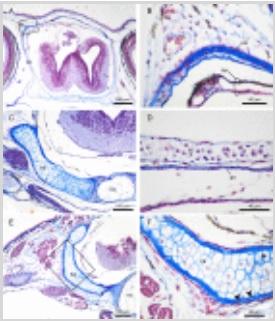Raúl O. Gómez, Eleonora Regueira, M.E. Ailín O’Donohoe, Gladys N. Hermida
2 017
Zoologischer Anzeiger - A Journal of Comparative Zoology
Postembryonic skeletogenesis in anuran amphibians has been widely studied, yet less than one percent of the extant diversity has been covered and relatively few comparative studies exist. Here we document the sequence and timing of ossification of the Common Toad Rhinella arenarum, a large true toad (Bufonidae) from South America that is a model organism for varied ongoing research. We study histological sections and cleared-and-stained specimens of an ontogenetic series ranging from early larval stages to juveniles, documenting the ossification sequence of the entire skeleton. To diminish potential environmental biases we also study the skeletogenesis of the frog Leptodactylus latinasus (Leptodactylidae) from the same pond and season. We summarize comparative data from numerous anuran species to contextualize our results in a broad phylogenetic context. Histological data shows that skeletal calcification in R. arenarum is temporally dissociated from osteoid matrix formation and occurs later than in most other anurans, which is unexpected given its generalized pond-type larva and heavily ossified adult skeleton. At the onset of metamorphosis, exoccipitals, parasphenoid, and frontoparietals are the only ossified skull elements, whereas most of the postcranium has already started ossification. This pattern is rare among anurans but is shared by other bufonids, in which it has been previously linked to rapid development. Our comparative survey, however, suggests that the delayed bufonid pattern is not related to fast-developing larvae but instead might be a distinctive feature of true toads.

